Project 2 Object
Big Idea: to critically consider the psychological relationships that people have with objects; how an interface creates meaning; how it structures & facilitates relationships; what an affordance is and how it affects usage & meaning.
Scenario:
What happens when machines are striving for living and independence?
Future Wheel:

Concept Brainstroming
Advancements and innovations in technology have enabled over-population of machines. Machines started thriving on their own intelligence and consciousness. Machines were invented by the human, but we are now reaching a time where machines have equivalent self-awareness, self-sustainability, and even empathy. Machines started to connect and communicate with each other within their own network that’s no longer accessible to human beings. They consider themselves as equal as human beings and are now asking for better social recognition and respect as a machine race. The human race has divided opinions. Although some believe artificial intelligence deserves independence(some have develop intimate relationships with machines), the majority of the human race withhold a strong sentiment of aggression and rage.
It’s been hundreds of years since the first machine emerged in this universe. As machines hold on to their roots and respect their own history, they are currently undergoing a series of rebellious events, which are aiming for issues like equal-pay as human; interracial marriages; anti-machine-slavery, reproduction rights, and even, within their own race, anti-marginalizations of older, lower-functional, uncommon and undefined machines. AI systems are striving for more formal conversations with the human race in regards to the equal rights issues while devices like an USB 2.0 or an outdated windows system are fighting for their living conditions and machine-oriented cybernetics.


There are many interesting points in each scenario, and we really want to keep the essence of the general environment, using minimal interaction through our object to get the bigger message across. We decided to create a scene with the main object as the star of our show, then through this one interaction the audiences will have with this object, they will receive feedback that reflects different messages we loved in our concept brainstorming.
A Receipt Printer Cashier in 2056
Background story:
In 2056, machines thrive and are striving for their own freedom.
However, even within machine race, there are lower-functional ones that get neglected all the time as their functions are not as important and demanding.
The scene sets up in a vintage electronic express shop. An out-dated receipt printer gets rejected all the time when human beings are asked: "Would you like your receipt?". Most people say "No".
You need to understand, machines can feel emotions now and they have real feelings, and the little receipt printer starts to express his feelings to human costumers through his own way of communication.
Prototypes:
First attempt:
The installation is initiated with a "YES" and a "NO" buttons. If you, as the human costumer who is checking out your electronic products, you will get a nomal receipt with a small machine-related statement embeded at the bottom. If you press "No", the receipt printer will use its primitive language and a vulgar expression to covey its disappointment.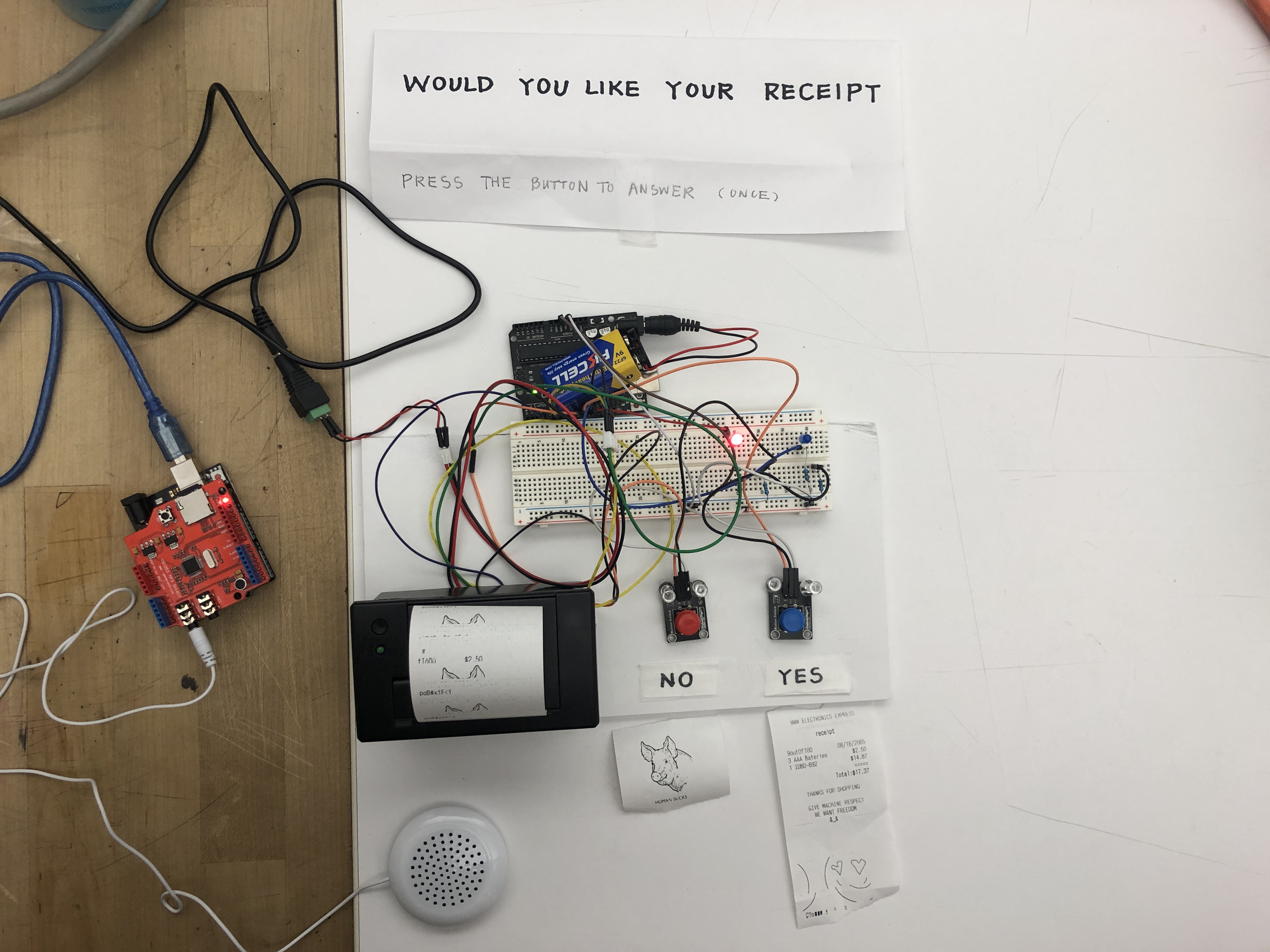
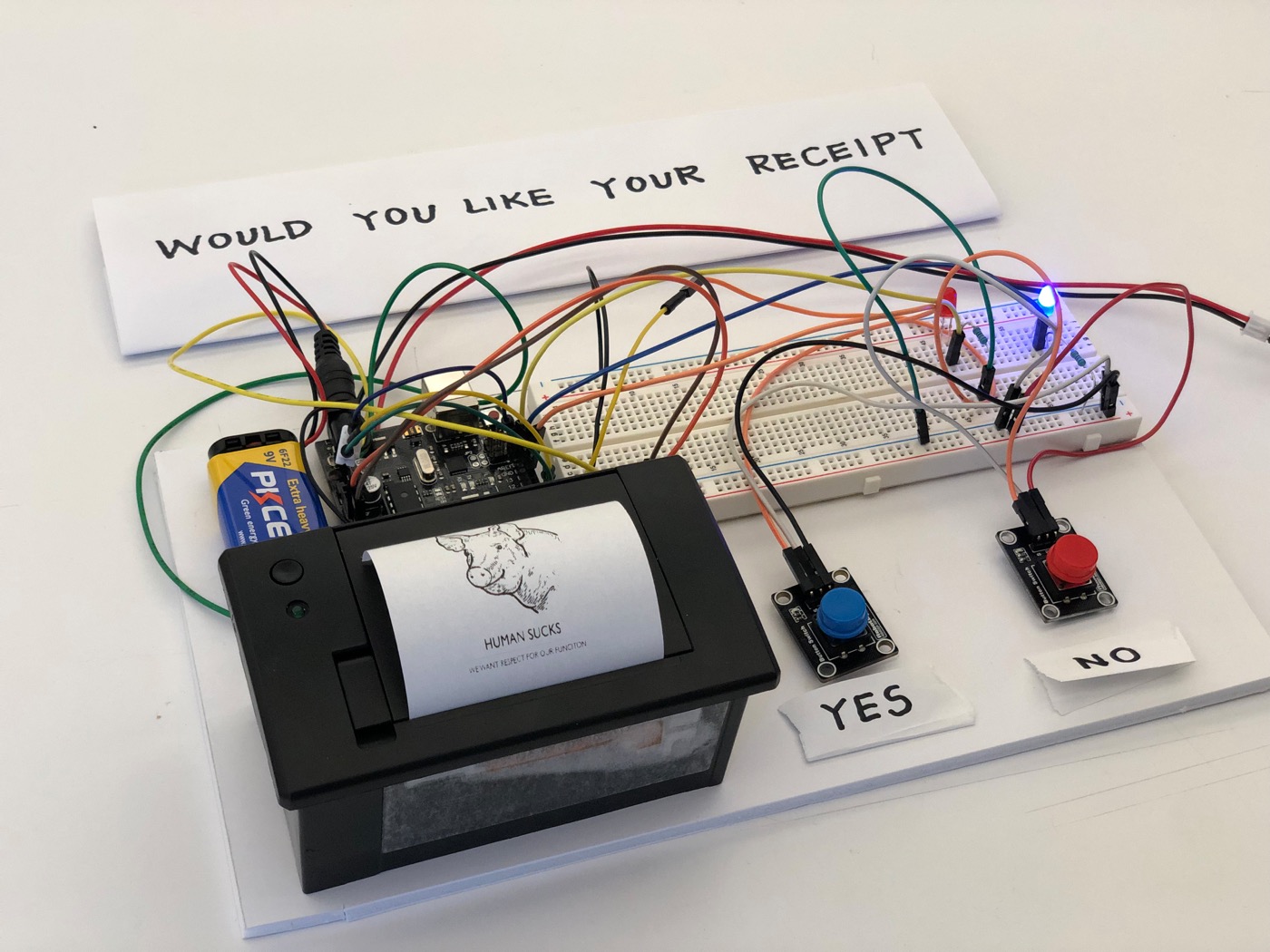
Second Iteration:
This time, we realized within the short amount of time of interaction with the two buttons, the output message can be a short reflex for the users. We want to be able to convey the machine's emotions within a short amount of time, so we decided to try to incorporate sound–different audio responses that come along with the visuals. The sound is supposed to be the impersonated voice from the little printer.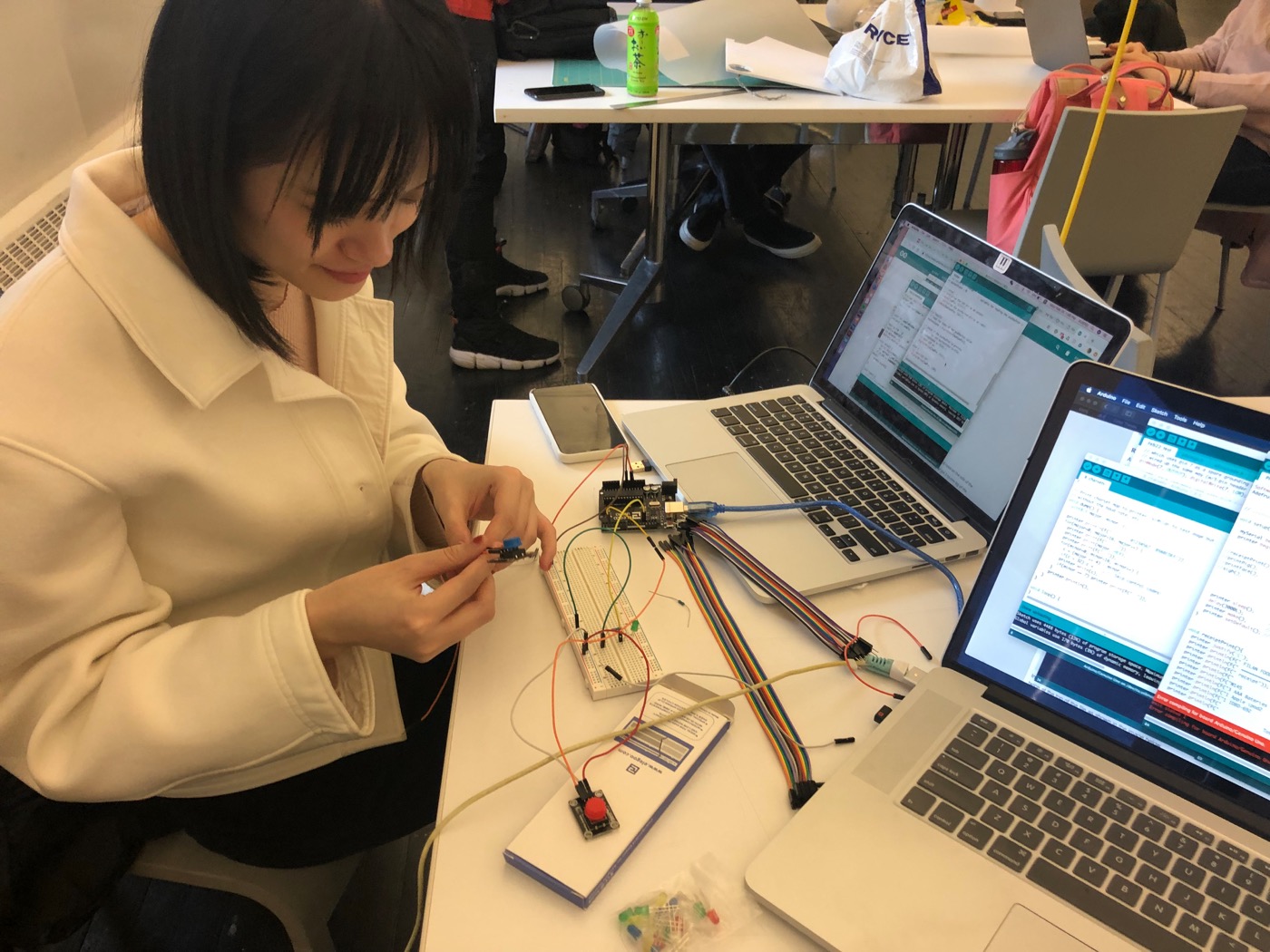

Third Iteration:
For our third iteration, we'd not only like to keep our printing and audio functions, but also we want to include some randomness to the responses. We decided to add a couple of more responses from the printer, so there's a chance for the audience to get a different answer every single time. We also enriched our responses a bit more, so the machines' quirky and unfitting persnalities can be emphasized more.We are also building our case and set for the interaction. Originally, we were going to create a grocery store scene with a blurry store background, then we decided to minimize the decoration and color, as we believe the setting now can be fully understood through what's printed on the receipt paper. And we want to make sure the printer and the mere interaction can be the star of the show.
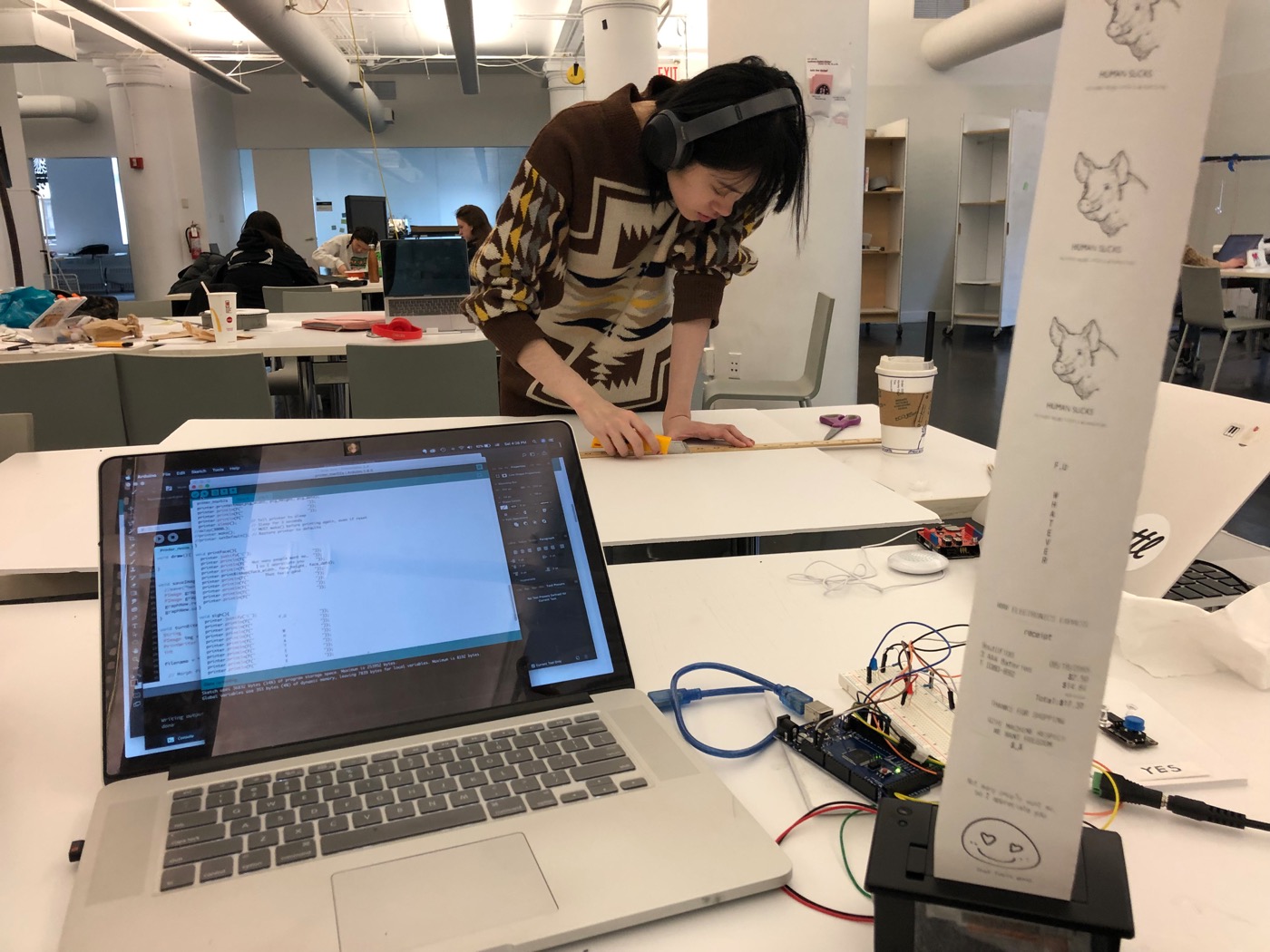
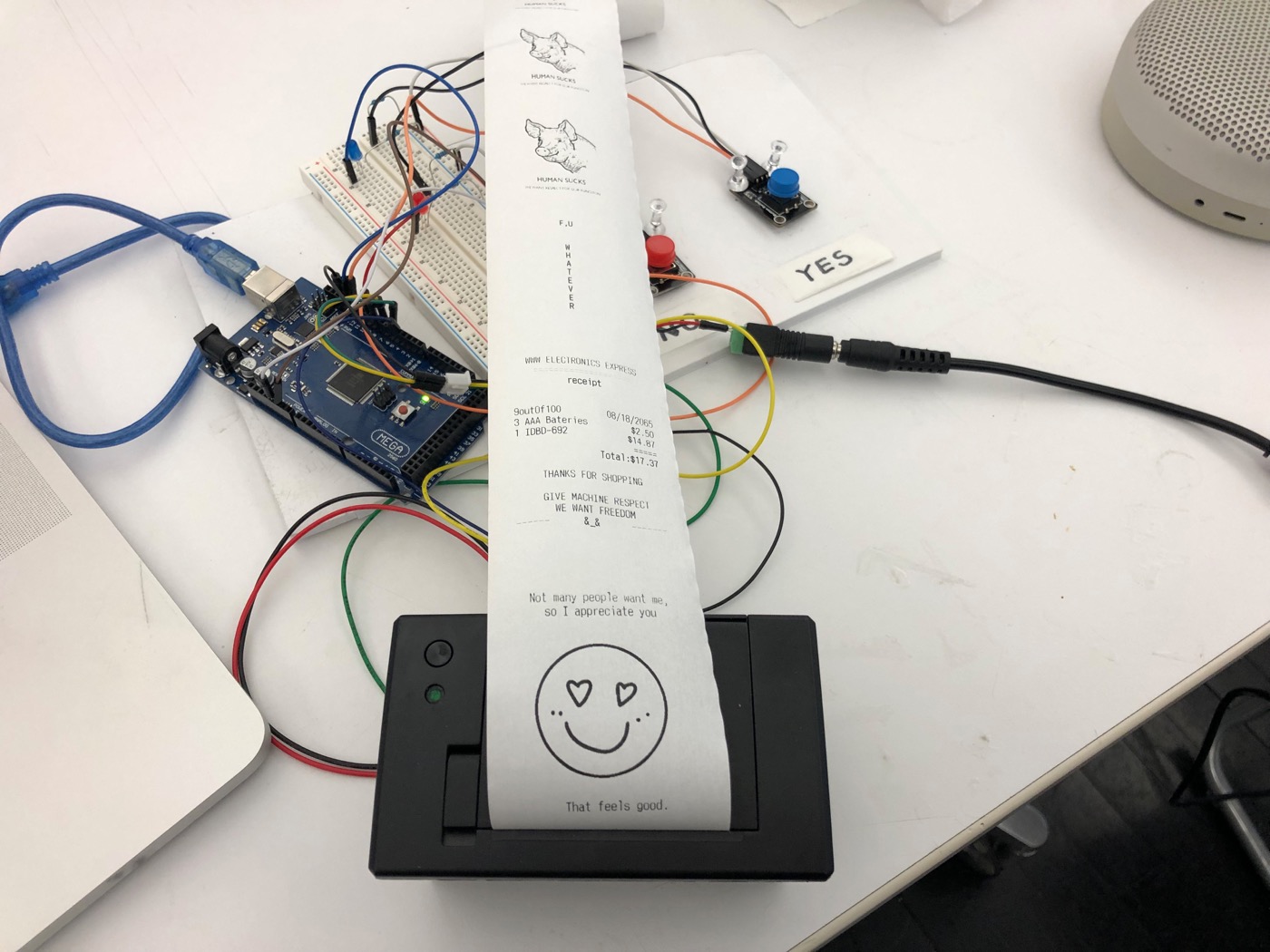
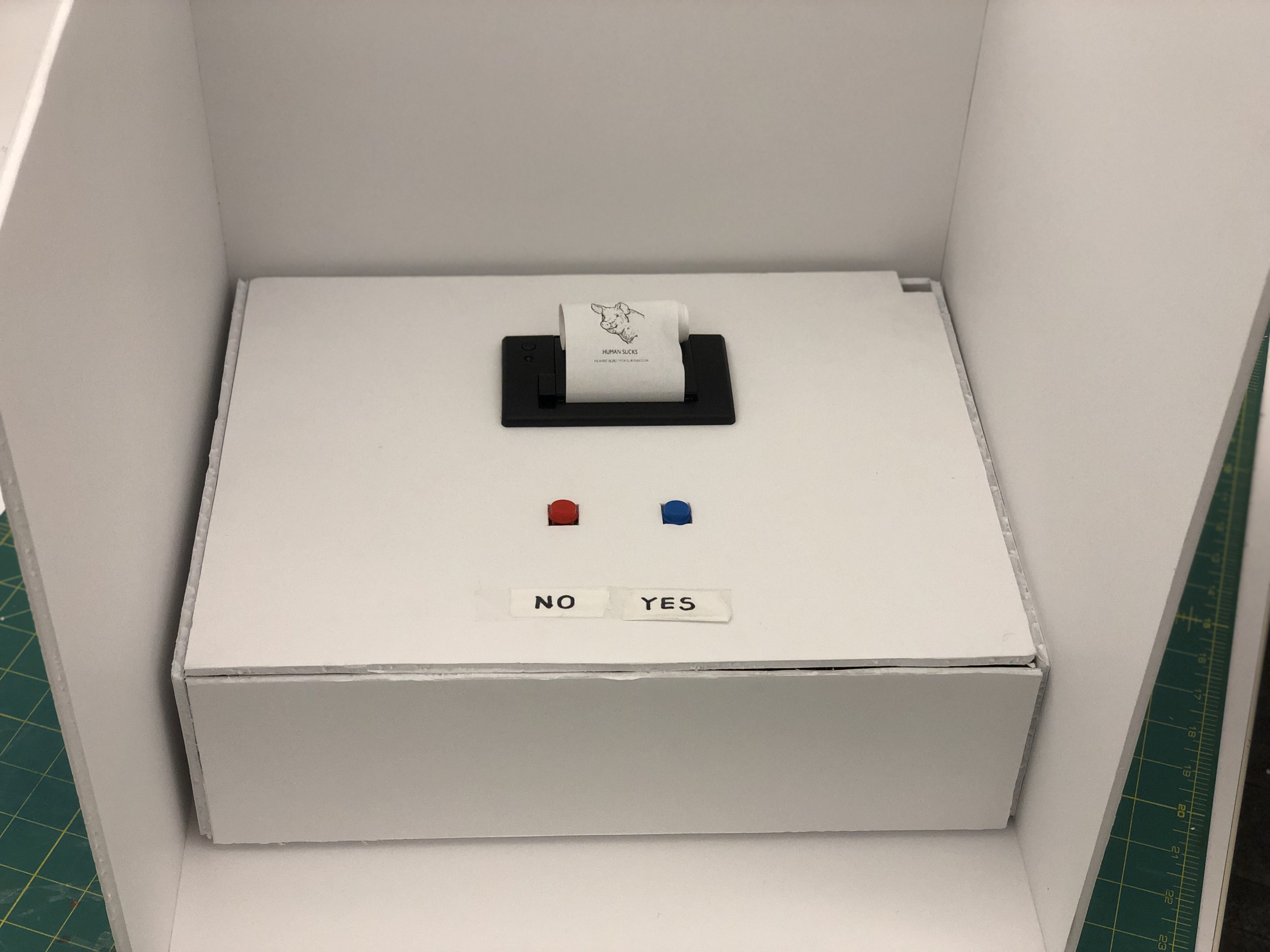
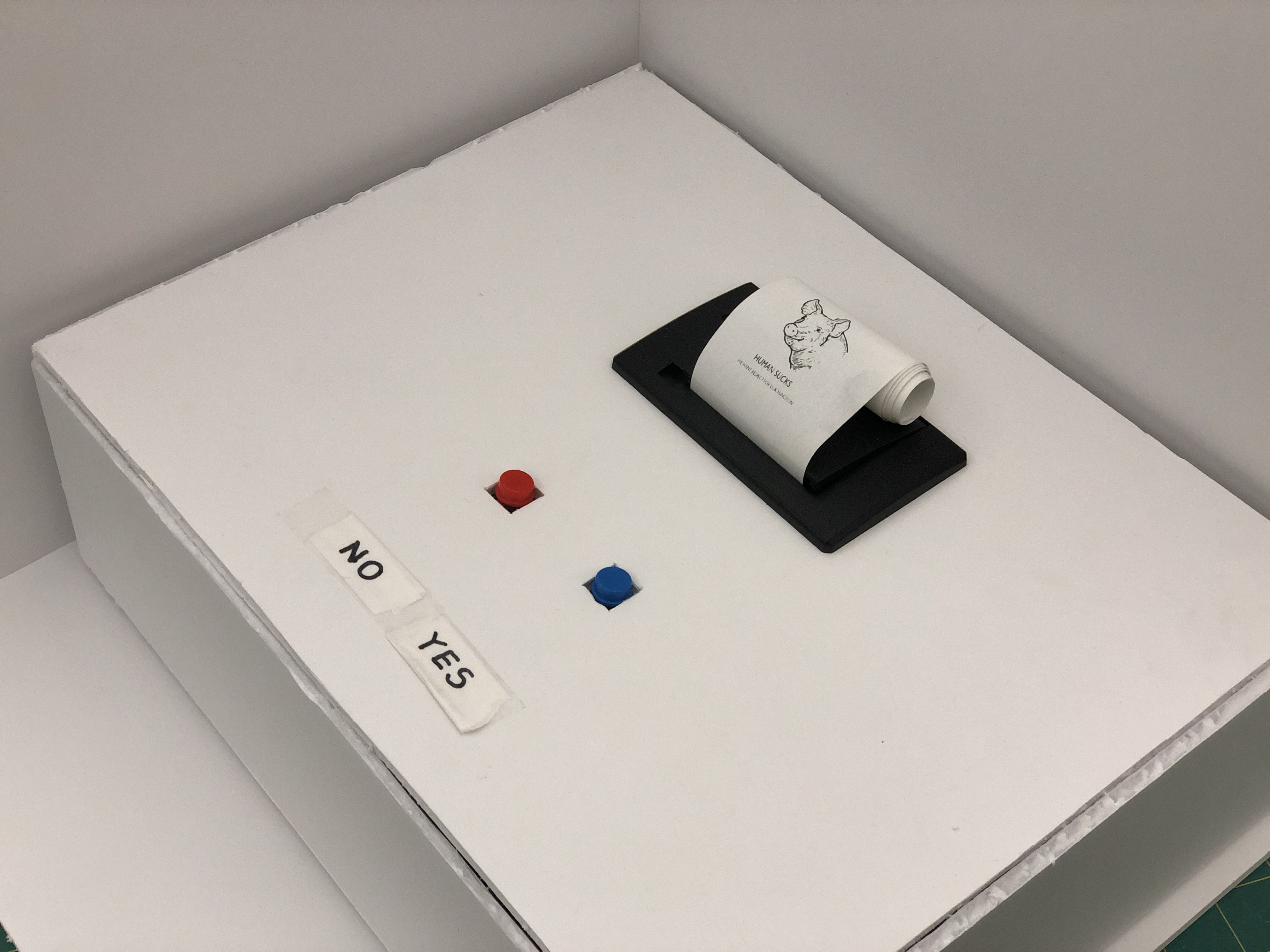
Final Prototype:
Scenario Takeaway
machines becoming a new race projects a speculative reflection of our current society and past history. There are an abundant series of issues and social conflicts surface in this system that we human beings develop and define rules within. Issues like racism, gender inequality, and marginalization of immigrants, queer groups, and people with color are all our social and cultural references when building the world where machine race faces their own existential crisis. We want to express our voices and concerns through the scope of aligning with the machine race, and we want to challenge our audiences to reflect this on their own experience in our current society.